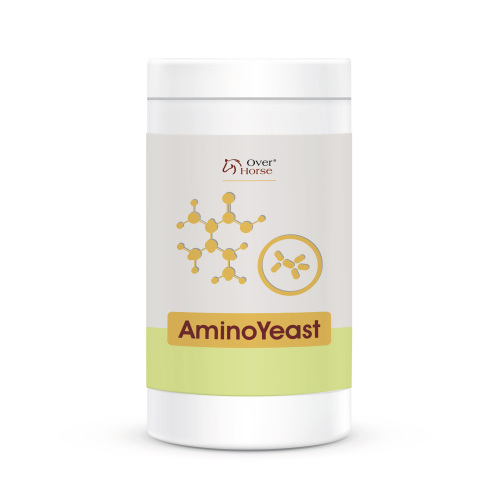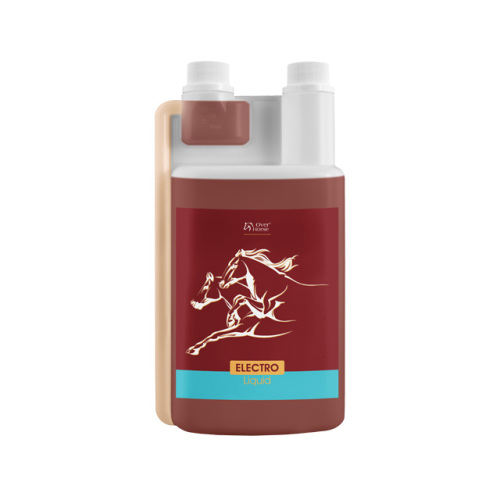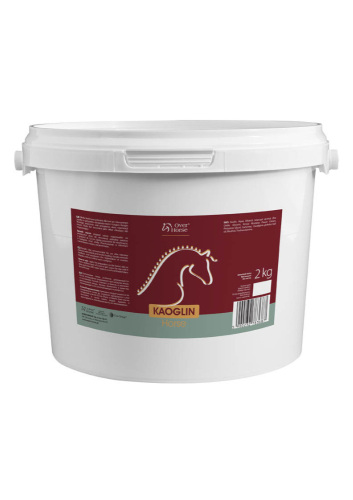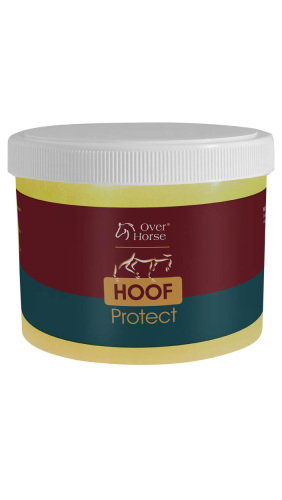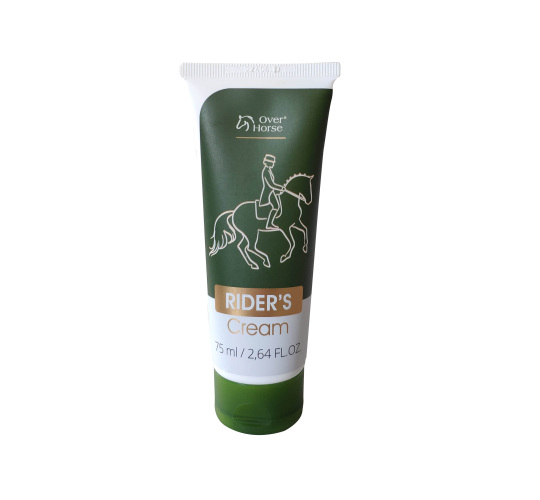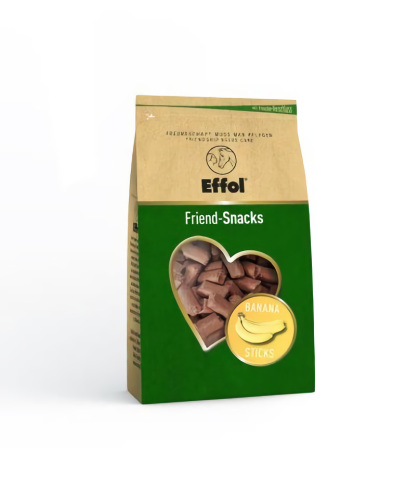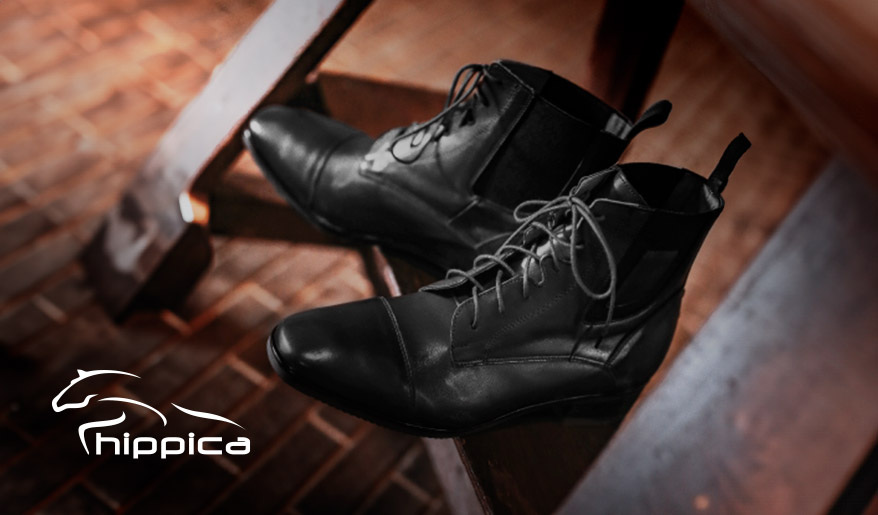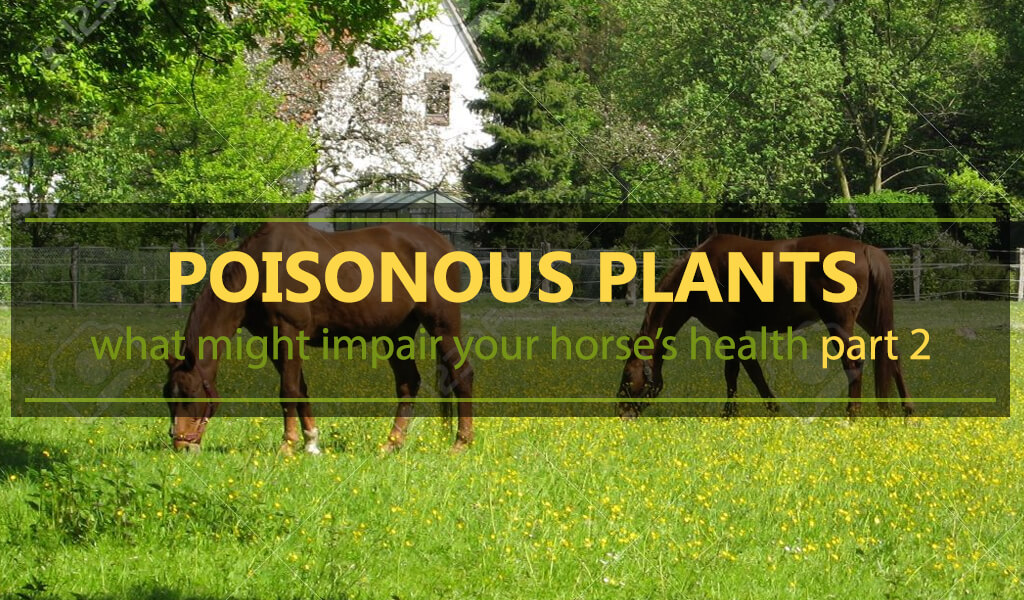
background source: 123rf.com
In the first part of this article we mentioned some plants that may be poisonous for horses. Today, we present another portion of this type of plants - how they look, what symptoms of poisoning might they give when your horse consume them.
Where and how your horse can get poisoned
On a pasture
Grazing on a pasture, your horse can eat poisonous plants, which is why it is crucial to search this place beforehand. The animal should naturally avoid strains that would be harmful to his health (only colts can have some troubles with it, initially). But sometimes it happens that horses find these toxic plants tasty, and if they eat them frequently, they can become a source of many health issues, even death. Pastures that are of low quality, there are only a few animals on it, are not regularly mowed, planted and fertilised could force your horse to look for other snacks than grass that is insufficient.
It is crucial to purchase only from trusted hay suppliers. You can "test" a supplier only in summer, when his or her "product" is still on a meadow. Then you can take a look at the place from where the grass will be mowed, paying attention to the presence of any toxic plants.
When a farmer has ready-to-sell bales, you have no chance left to thoroughly look at the hay. Remember that slight seeds might be invisible to you. It is also worth remembering that most dried plants do not lose their toxic properties. Your horse will also not see or smell it in his hay. If he would eat it systematically, it might have irreversible effects.
From hand
Many horses endlessly trust people, or they built the association "anything I get from the human's hand is tasty." So picking anything "green" by a road and giving it to your horse might end badly for him. Animals, from pure gluttony, might consume anything they get from your hand.
In a garden
We tend to decorate stables with foreign, sometimes even oriental strains, which our horses never got the chance to learn, and their ancestors did not build negative connotations. It is dangerous, because your horse might eat them out of curiosity. The argument that "if he eats only one leaf, nothing bad can happen" is wrong. After eating one leaf, he might try to taste them every day on his way from the stable to a pasture, as well as on his way back, if the plant is in his way. After a few weeks you might harvest the toll of "one leaf."
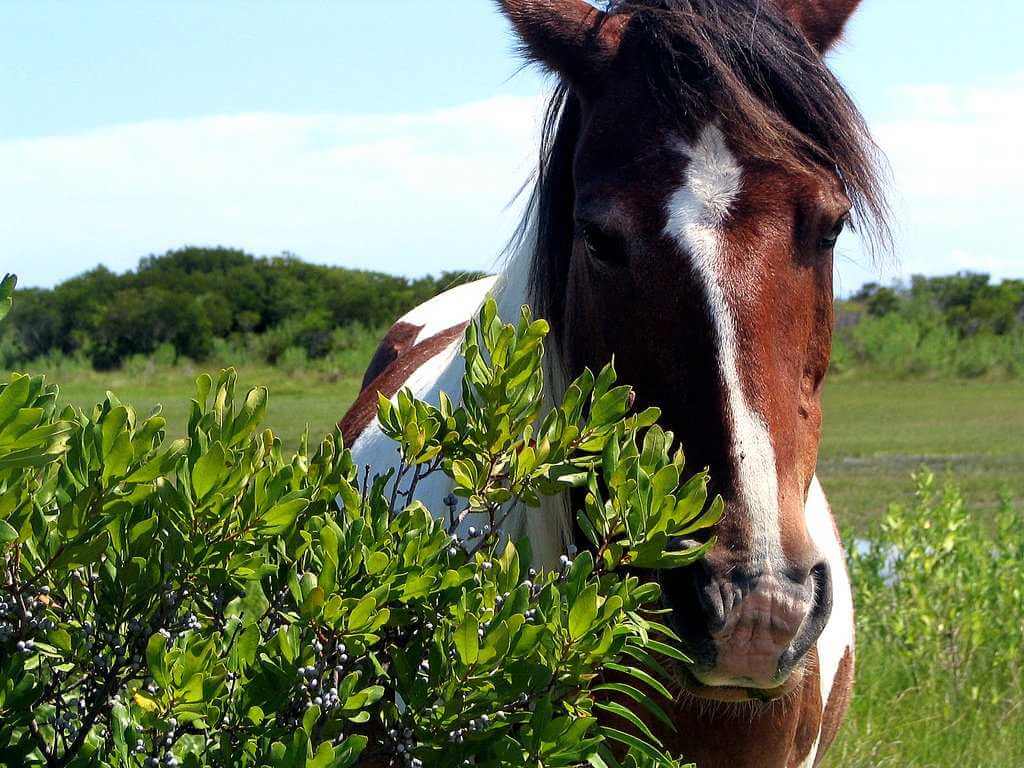
source: businessinsider.com
When you suspect poisoning
- Lead your horse from a pasture to his stall as soon as possible, limiting his access to any fodder.
- Call a veterinarian, telling him all the visible symptoms and that you suspect poisoning.
- Observe your horse until the vet arrives, in the meantime send someone to the pasture to look for a possible cause of your horse poisoning.
- Under no circumstance walk with your horse, also do not try to lunge him - there are toxins, which will spread in his organism due to more intense metabolism.
- Take out of his stall anything that might hurt him in case of sudden convulsion, inertia or paralysis.
- Take your horse to an aloof stall in order to avoid any additional stress.
- In many cases, it is good to administer activated carbon. However, it is worth consulting with the vet, if you are calling him from a phone.
Poisonous plants:
Giant hogweed, cartwheel-flower, giant cow parsnip, hogsbane, giant cow parsley, wild parsnip, wild rhubarb
(l. Heracleum mantegazzianum)
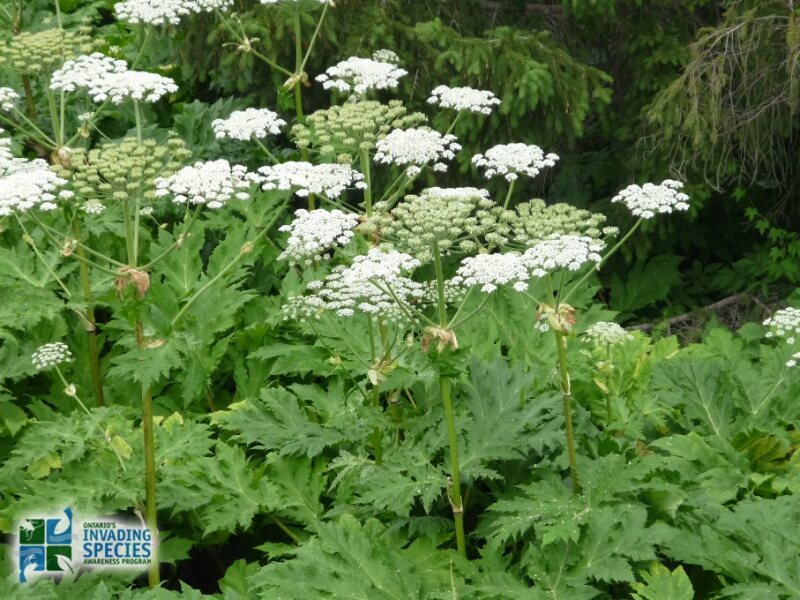
source: invadingspecies.com
All parts of this plant contain poisonous furocoumarine. Especially when the sun is very intense, heracleum mantegazzianum becomes especially harmful. When animals eat green plants, it may cause inflammation of their digestive tract and concealed haemorrhage (excessive internal bleeding).
Symptoms of poisoning:
Jimson weed, Devil's snare, thornapple, moon flower, hell's bells, devil’s trumpet, devil’s weed, tolguacha, Jamestown weed, stinkweed, locoweed, pricklyburr, devil’s cucumber
(l. Datura stramonium)
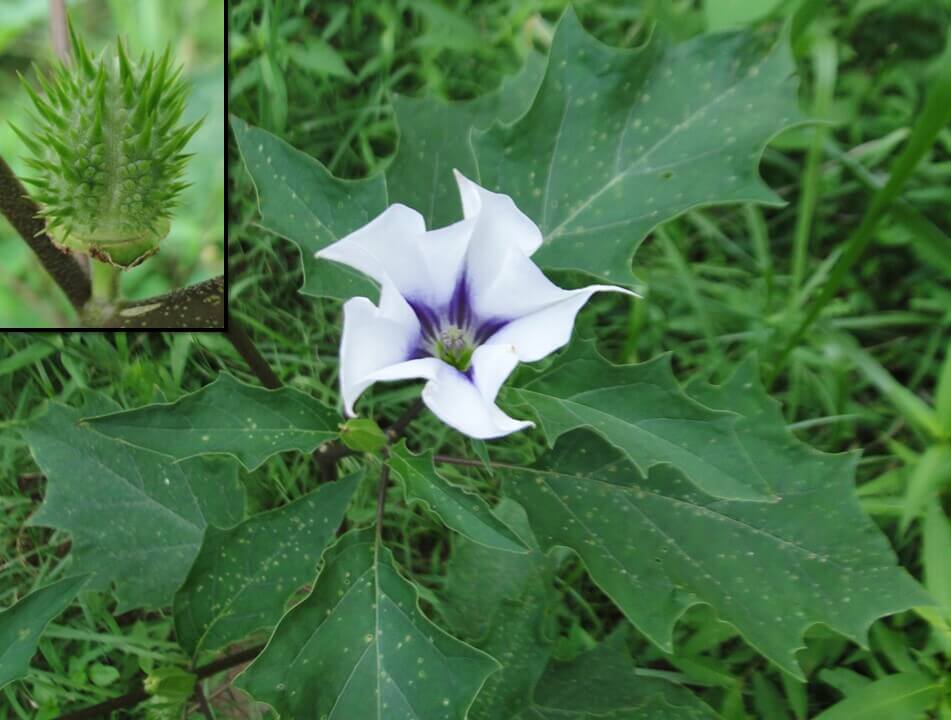
source: jimbotany.com
All this plant's parts contain poisonous alkaloids, which have crippling and befuddling properties. Consuming more than 1,25 kg might be fatal.
Symptoms of poisoning:
- anxiousness
- shivering
- paralysis
- excessive salivation
- paresis
European beech, common beech
(l. Fagus sylvatica)

source: plantesdehaies.fr
Seeds containing fagin (alkaloid) are the most harmful to horses. Leaves and sprigs might also contribute to the horse's poisoning, because they contain phenolic acids.
Symptoms of poisoning:
- colic
- contractures
- paralysis (most commonly of hinder body parts)
(European) birthwort
(l. Aristolochia clematitis)
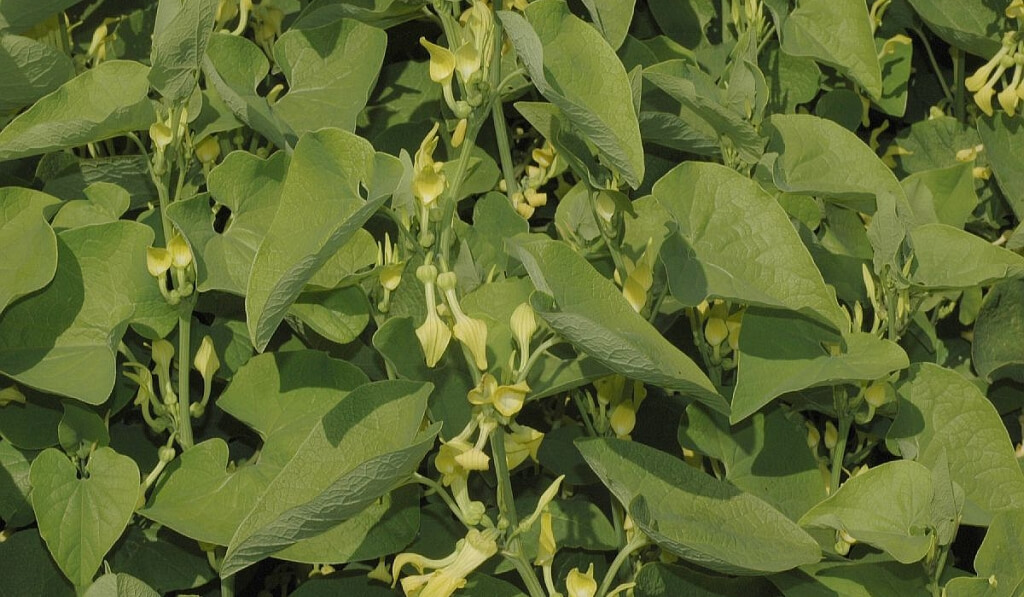
source: tcf.bh.cornell.edu
This plant is highly poisonous to horses. All its parts, especially roots and leaves, which contain toxic acids, which impair the horse's digestive system and kidneys.
Symptoms of poisoning:
- balance and circulatory system disorders
- low body temperature
- depression
- lack of appetite
- constipation
Bittersweet, bittersweet nightshade, bitter nightshade, blue bindweed, Amara Dulcis, climbing nightshade, fellenwort, felonwood, poisonberry, poisonflower, scarlet berry, snakeberry, trailing bittersweet, trailing nightshade, violet bloom, woody nightshade
(l. Solanum dulcamara)
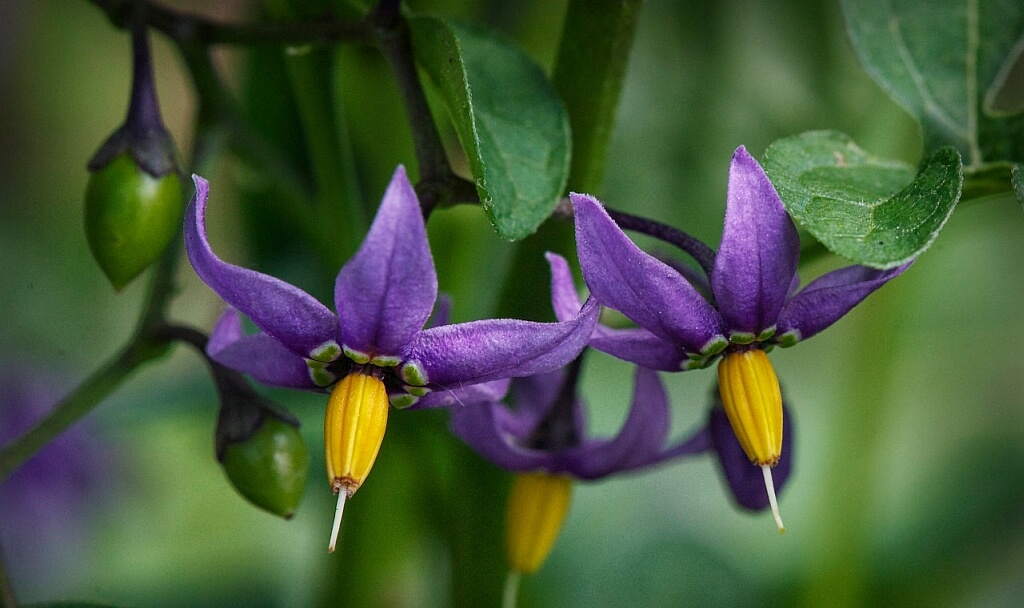
source: thepoisondiaries.tumblr.com
Especially unripe berries contain high quantity of poisonous alkaloids (saponin and solanine). They cause disorders of breathing and damage to kidneys.
Symptoms of poisoning:
- suffocation
- diarrhoea
- hyperactivity/apathy
- brown-red urine
Wild lettuce, bitter lettuce, laitue vireuse, opium lettuce, poisonous lettuce, tall lettuce, great lettuce, rakutu-karyumu-so
(l. Lactuca virosa)
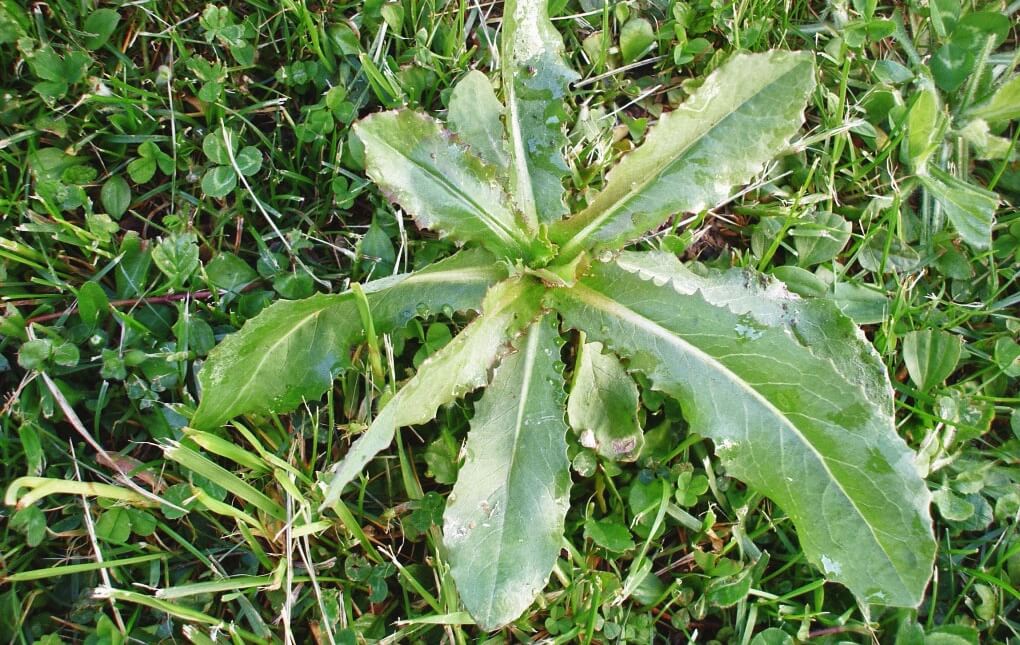
source: psychotropicon.info
Its milky juice contains poisonous substances (various lactose), which consumed in large amounts is harmful to horses.
Symptoms of poisoning:
- sweating
- increased heart rate and breathing
- annoyance
- muscular paralysis
Cowbane, northern water hemlock
(l. Cicuta virosa)
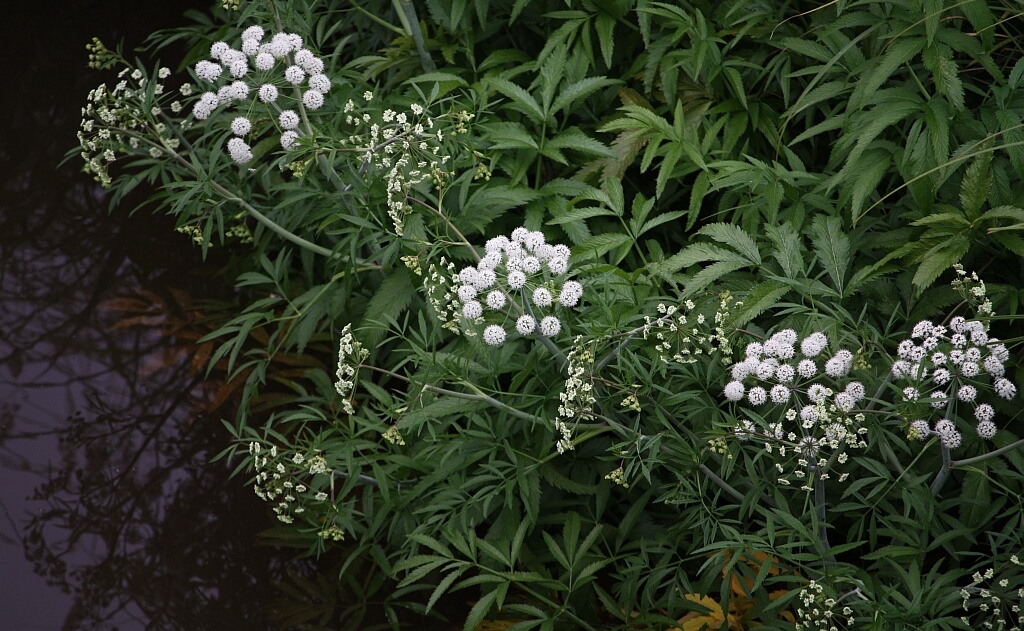
source: nutrawiki.org
All the plant's parts, especially its fleshy rhizomes contain highly affective poisons (resin and alkaloid). Cowbane does not lose its toxic properties after drying. Consuming little amount (ca. 400g) causes severe poisoning. First symptoms show after approximately 20-30 minutes from eating. This poisoning is often deadly.
Symptoms of poisoning:
- increased heart rate
- contractions
- increasing suffocation
- cardiac disorders
Rough chervil
(l. Chaerophyllum temulum)
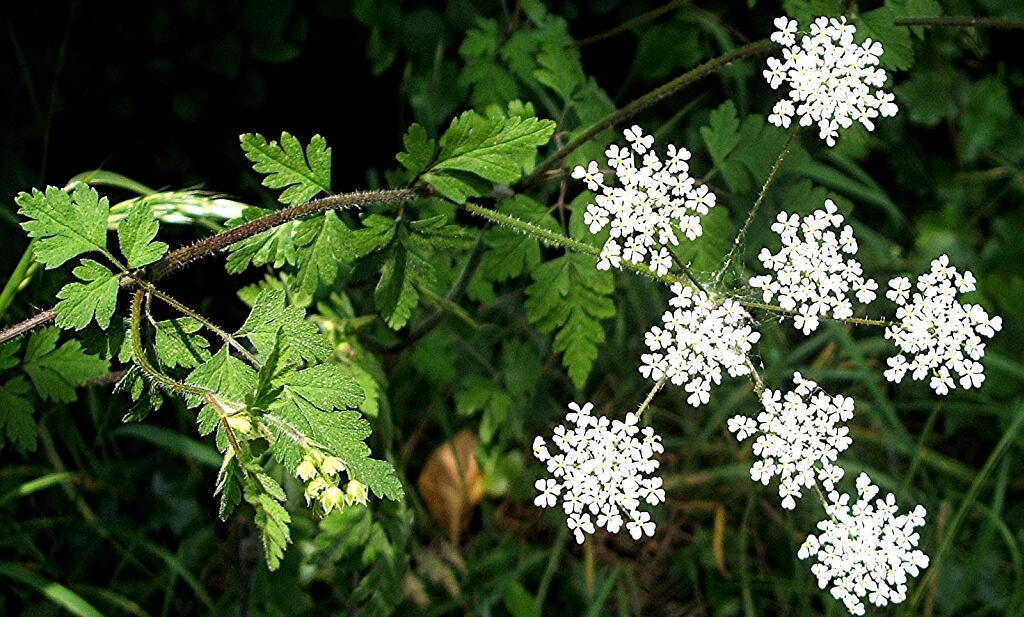
source: memim.com
For horses toxic are both its stem and seeds due to alkaloid that can be found in them, which causes severe inflammation of digestive system after consuming them.
Symptoms of poisoning:
- massive diarrhoea
- excessive salivation
- apathy
- shaky gait, movement disorders
- in acute cases: paralysis
European spindle, common spindle, spindle
(l. Euonymus europaeus)
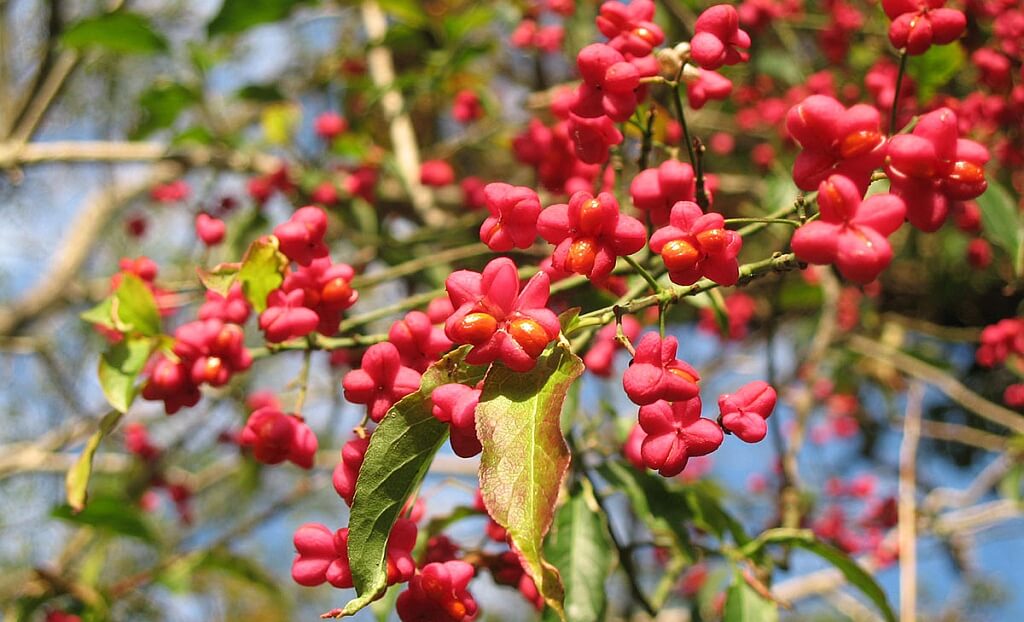
source: chewvalleytrees.co.uk
All its parts are poisoning due to glucosides and alkaloids that they contain. Consuming carmine, capsular fruits along with their seeds might result in cardiac and circulatory disorders. Larger amount of spindle might be lethal to the horse.
Symptoms of poisoning:
- massive and prolonged diarrhoea
- high body temperature
- muscles contracture
- apathy
- convulsions
Sour cherry (including: morello cherry, amarelle cherry, Montmorency cherry), tart cherry, dwarf cherr/Plum
(l. Prunus cerasus/Prunus)
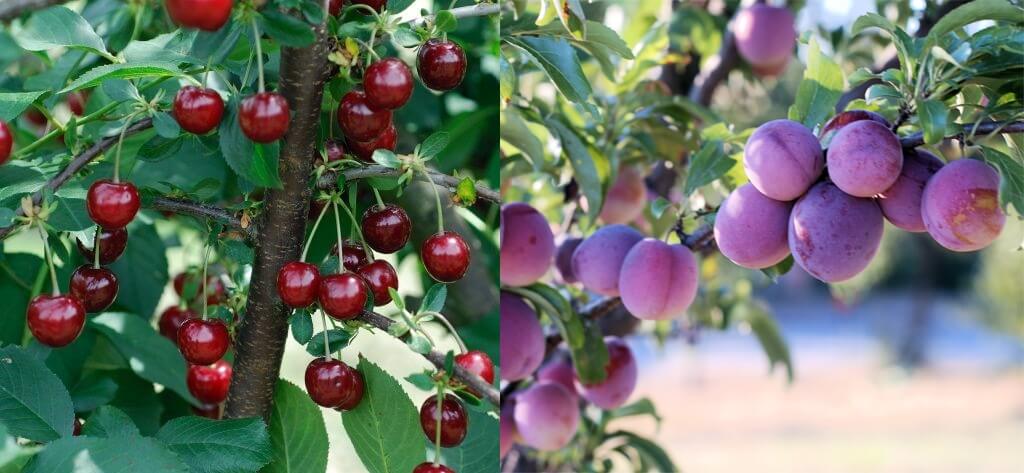
from left: cherry fruits, source: baum-rosenschule-mueller.de || plum fruits, source: italyhouse.wordpress.com
Both stones and leaves, but also fruits contain highly dangerous hydrogen cyanide. Also biting their barks and branches is dangerous for horses. Withering leaves are especially dangerous during autumns. Hydrogen cyanide when it reaches the horse's stomach, activates due to hydrochloric acid and rapidly assimilates into the blood. After assimilation, it blocks enzyme activity, which take part in metabolising oxygen in cells. Treatment consists in administering an antidote.
Symptoms of poisoning:
- drawn blood is very bright
- increased heart rate
- increased number of breaths
Wood anemone, windflower, thimbleweed, smell fox
(l. Anemone nemorosa)
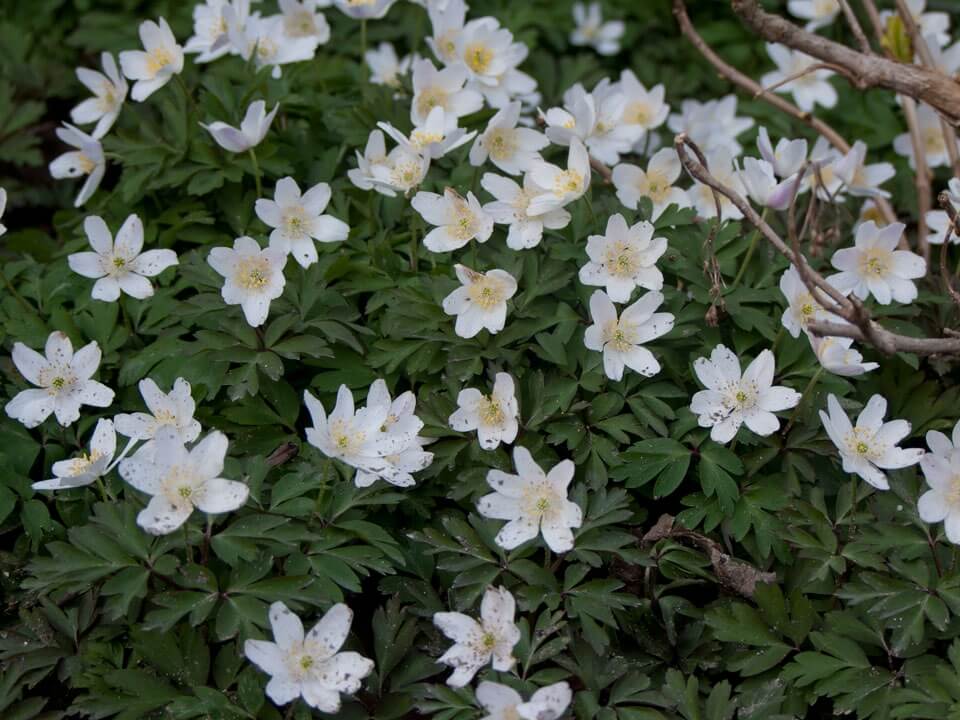
source: liliumaquae.com
It is a pretty common strain, which can be found in groundcover. All the plant's parts contain variable amount of poisonous alkaloids of sharp taste - protoanemonin, which irritates the skin. Wood anemone causes inflammation of kidneys and digestive tract, it also contributes to heart failures.
Symptoms of poisoning:
- massive diarrhoea
- colic symptoms
Potato
(l. Solanum tuberosum)
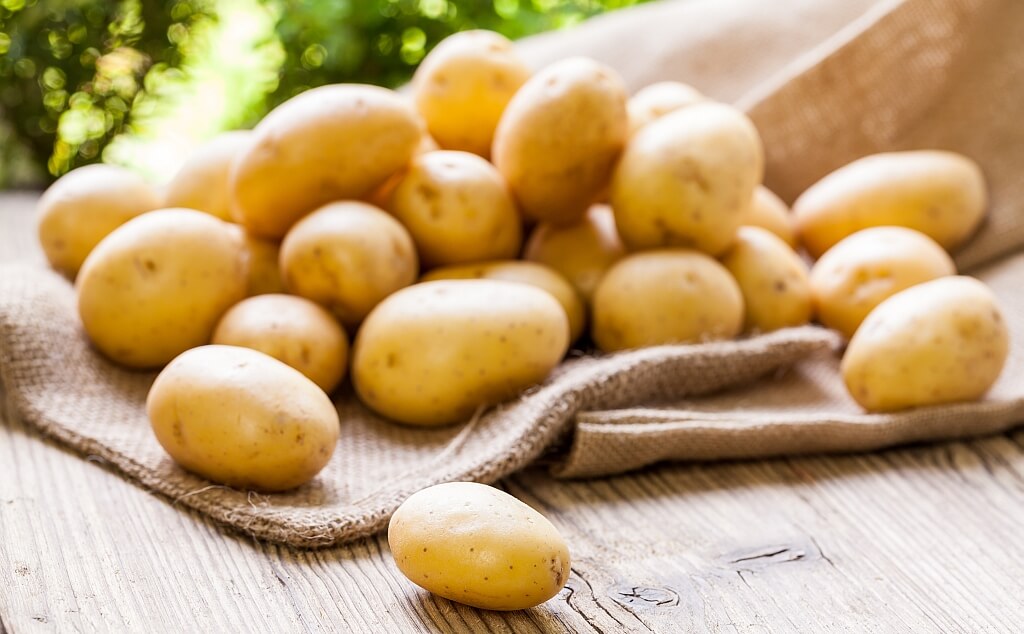
source: solutionstalk.com
The most dangerous are its green parts, which contain alkaloid solanine that causes digestive tract inflammation, which may be even fatal. In tubers, which were in sunny places, there are critic amounts of toxins.
Symptoms of poisoning:
- massive, bloody diarrhoea
- digestive system irritation
- blemish on head, abdomen, limbs
Autumn crocus, meadow saffron, naked lady
(l. Colchicum)
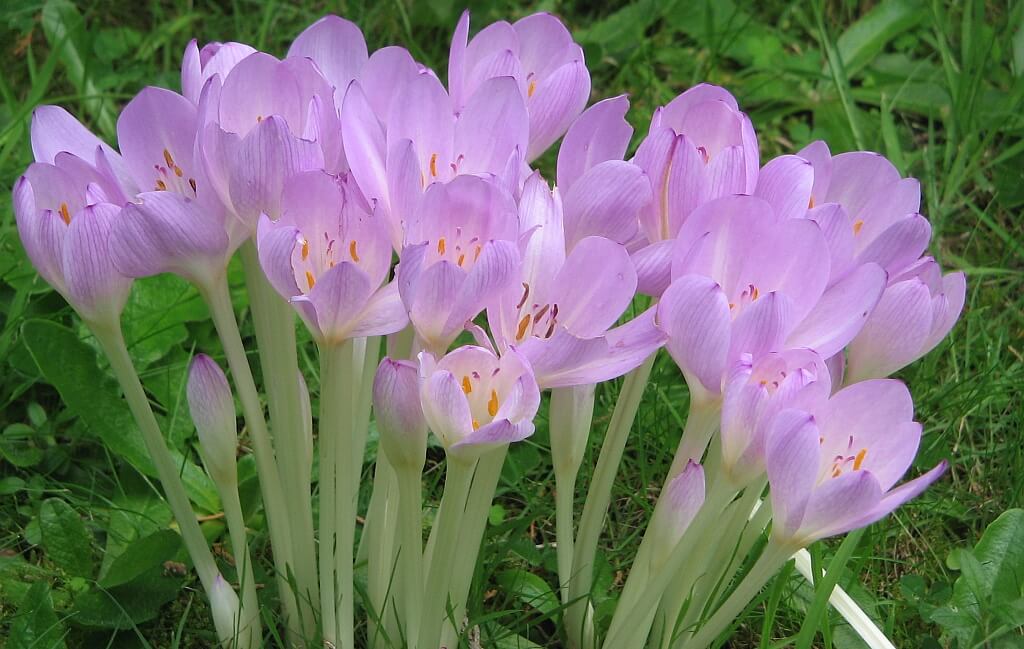
source: imagejuicy.com
It can be found on wet meadows and pastures. Poisonous are its leaves, bulbs, but most of all seeds, which dried can be found in hay. This flower contains poisonous alkaloid - colchicine. The animal's death is most often caused by cardiorespiratory failure.
Symptoms of poisoning:
- bloody diarrhoea
- heart and respiratory system paralysis
- lack of appetite
- excessive salivation
- anxiousness
- haematuria (blood in urine)
- suffocation
Common laburnum, golden chain, golden rain
(l. Laburnum anagyroides)
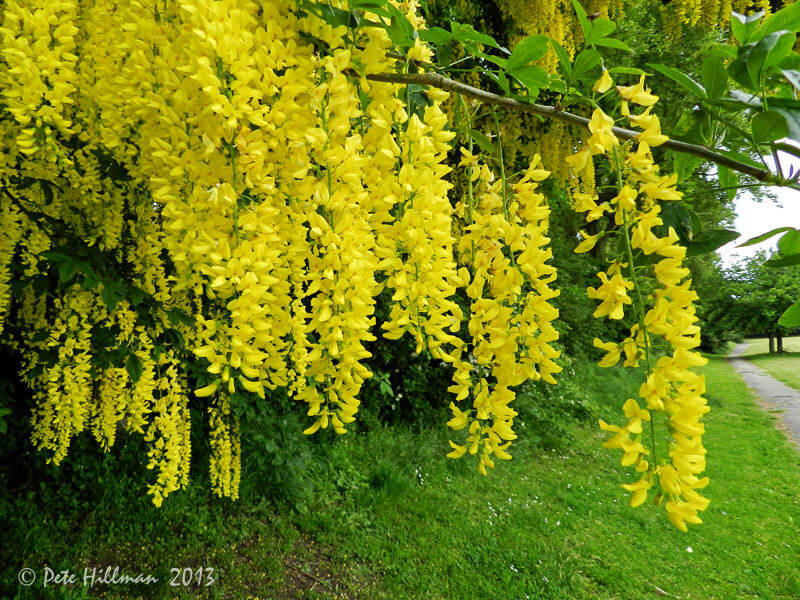
source: lightscapes.info, phot. Pete Hillmann
All its part, especially its black-brown seeds contain very poisonous alkaloids. Lethal dose is as little as 0,5 g for 1 kg of the animal's body mass. Eating bark, roots, flowers and seeds might result in poisoning.
Symptoms of poisoning:
- colic symptoms
- convulsion
- rapid contractions
- respiratory system paralysis
- hinder legs paralysis
Scotch broom, common broom, Scot's broom, English broom
(l. Cytisus scoparius)
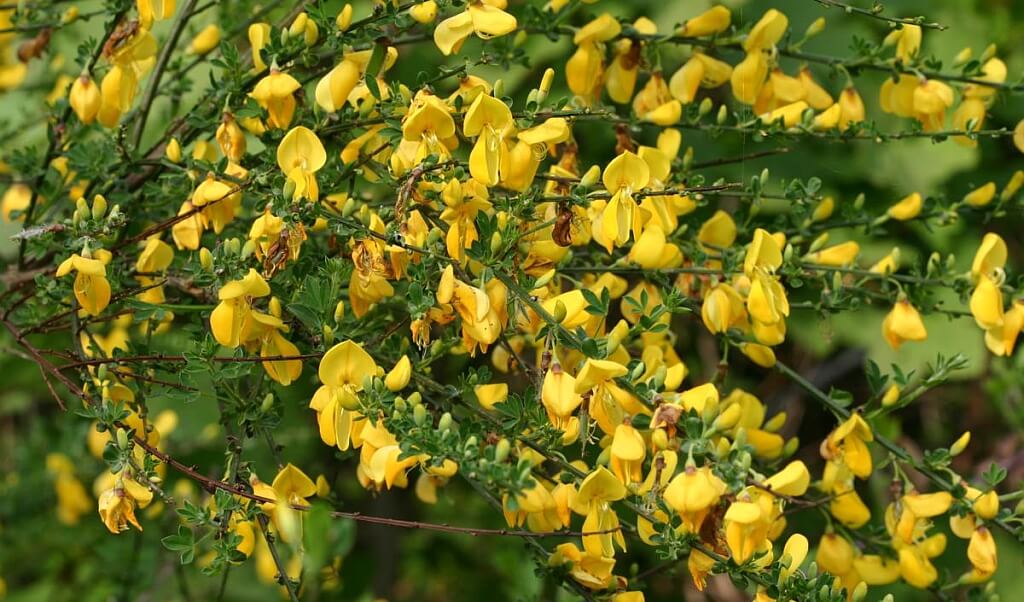
source: naturespot.org.uk
All the plant's parts, especially (unripe) seeds contain toxic alkaloid - sparteine, which causes gastroenteric disorders, even paralysis in acute cases.
Symptoms of poisoning:
- annoyance
- next: palsy symptoms
Thuja, cedar
(l. Thuja)
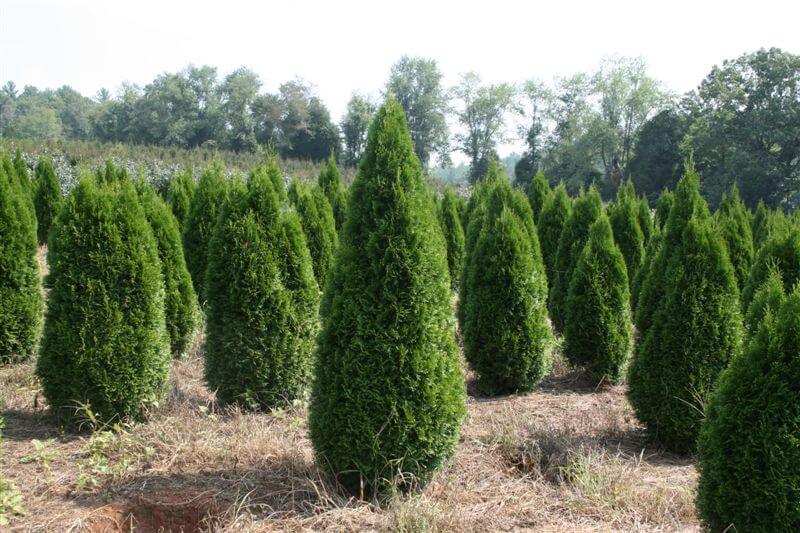
source: autoradiomandri.com
In its scaly leaves you can find an ethereal oil, which contains thujone that causes acute inflammations. Eating it may result in irreversible damage to kidneys and liver.
Symptoms of poisoning:
On the basis of the following books:
- Bruno P. Kremer, "Rośliny trujące w domu, w ogrodzie, w naturze", publ. Multico, 1996
- Blendinger W., "ABC zdrowia konia", pp.93-95. Zrzeszenie Studentów Polskich, Zakład Treningowy Koni w Zbrosławicach, 1984
- Zwoliński J., "Hodowla koni", pp.342-344. publ. PWRiL Warszawa, 1983.



 background source: 123rf.com
background source: 123rf.com source: businessinsider.com
source: businessinsider.com source: invadingspecies.com
source: invadingspecies.com source: jimbotany.com
source: jimbotany.com source: plantesdehaies.fr
source: plantesdehaies.fr source: tcf.bh.cornell.edu
source: tcf.bh.cornell.edu source: thepoisondiaries.tumblr.com
source: thepoisondiaries.tumblr.com source: psychotropicon.info
source: psychotropicon.info source: nutrawiki.org
source: nutrawiki.org source: memim.com
source: memim.com source: chewvalleytrees.co.uk
source: chewvalleytrees.co.uk from left: cherry fruits, source: baum-rosenschule-mueller.de || plum fruits, source: italyhouse.wordpress.com
from left: cherry fruits, source: baum-rosenschule-mueller.de || plum fruits, source: italyhouse.wordpress.com source: liliumaquae.com
source: liliumaquae.com source: solutionstalk.com
source: solutionstalk.com source: imagejuicy.com
source: imagejuicy.com source: lightscapes.info, phot. Pete Hillmann
source: lightscapes.info, phot. Pete Hillmann source: naturespot.org.uk
source: naturespot.org.uk source: autoradiomandri.com
source: autoradiomandri.com